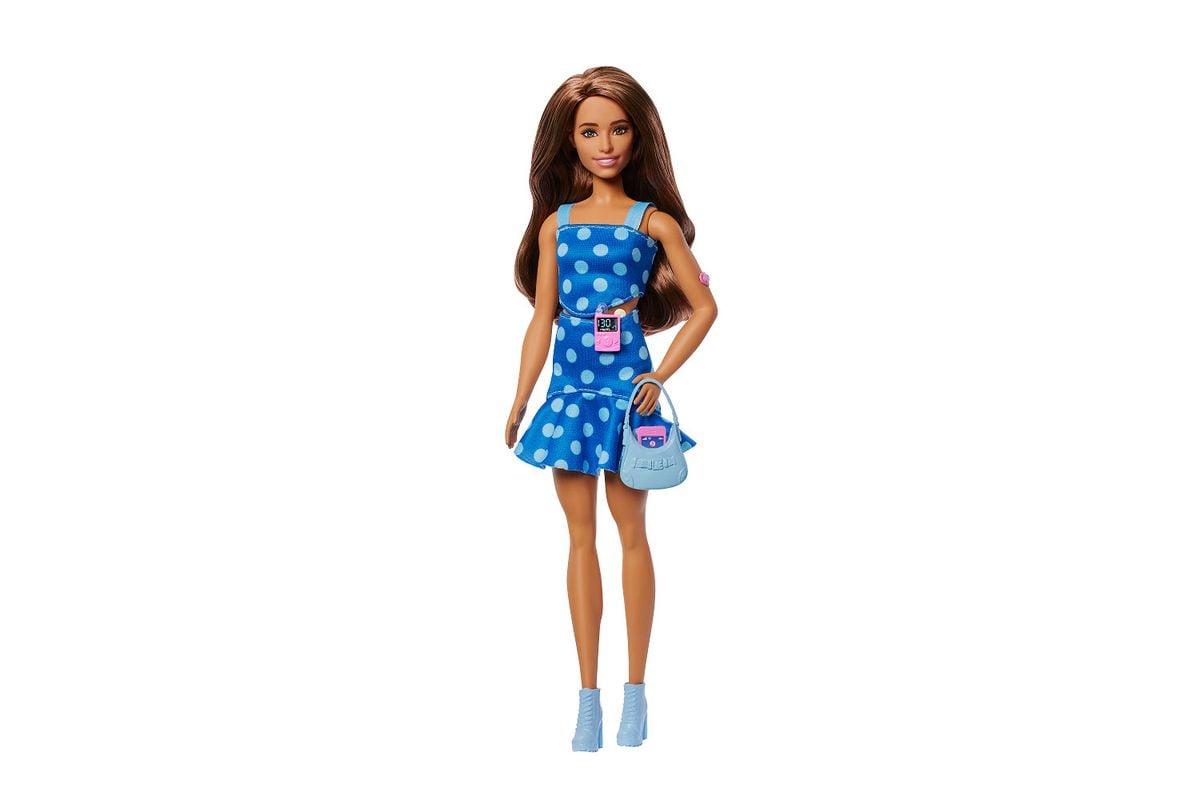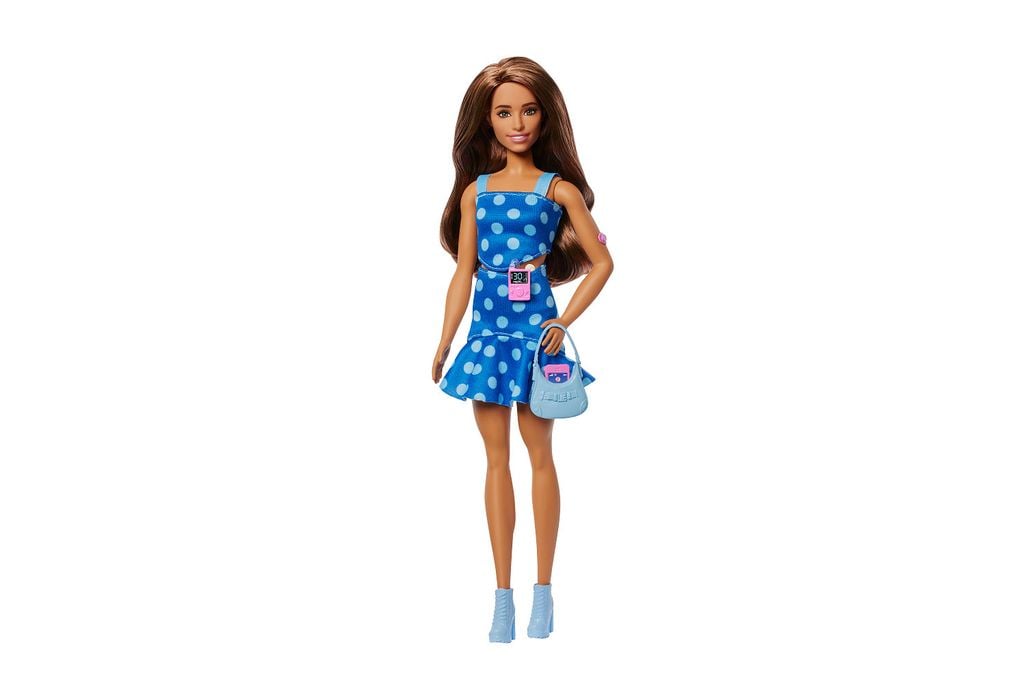
The new doll boasts a pink continuous glucose monitor to track blood sugar levels and a pink insulin pump

Mattel collaborated with leading diabetes organization Breakthrough T1D to design the first Barbie doll with Type 1 diabetes.
Mattel
Barbie has worn many hats—literally and figuratively since her debut in 1959. The iconic doll has traveled to space, performed surgery, run for the nation’s highest office and competed in the Olympics. Now, for the first time, Barbie is showing what it’s like to live with Type 1 diabetes, an often-invisible illness.
Mattel debuted the Barbie as part of the Fashionistas line, which seeks to reflect the diversity of the world by showcasing dolls with different skin tones, body types and medical conditions.
The new doll is outfitted in a blue polka dot ensemble—a nod to the blue circle, the global symbol of diabetes awareness. She comes with realistic tools that people with Type 1 diabetes rely on every day: a pink continuous glucose monitor (CGM) to track blood sugar levels, a smartphone with an app synced to the CGM and a pink insulin pump to deliver doses of the hormone. Each detail aims to normalize the tools of diabetes care and ensure the children who use them feel represented in the toys that they play with.
The Barbie doll comes with a continuous glucose monitor and an insulin pump. Mattel/https://tf-cmsv2-smithsonianmag-media.s3.amazonaws.com/filer_public/28/38/28386bf7-4005-4ca1-8667-0e5a6ca644c2/barbie.jpg)
Mattel developed the doll in close collaboration with Breakthrough T1D, a leading diabetes research and advocacy nonprofit. The toy company also consulted focus groups and volunteers who live with Type 1 diabetes.
The new Barbie aims to give children with the condition a higher level of visibility and understanding. “They feel seen. They feel heard. They feel empowered,” Pam Morrisroe, chief marketing officer for Breakthrough T1D, tells CBS News’ Nancy Chen.
“You don’t know immediately when somebody has Type 1 diabetes necessarily, unless you see their devices,” Morrisroe says. She describes the doll as “a conversation starter” and adds that “it’s a great way to educate.”
Need to know: The future of diabetes treatments
- Type 1 diabetes has no known cure, but recent research suggests stem cell treatments might one day be able to reverse the condition.
- A 2025 study found that 10 of 12 people infused with a stem cell-based treatment no longer needed insulin one year later.
Type 1 diabetes is a chronic autoimmune condition in which the pancreas produces little to no insulin, a hormone necessary for processing blood sugar. Contrary to some media misrepresentations, Type 1 diabetes is not linked to diet or lifestyle, and its exact cause is unknown. The disease requires constant vigilance, as blood sugar levels can shift based on everything from physical activity and food intake to sleep patterns and stress.
In 2021, around 1.7 million adults in the United States reported that they’d been diagnosed with Type 1 diabetes and used insulin to treat the condition; this number is projected to rise to about 2.3 million by 2033. Type 2 diabetes, in which the body can’t properly use insulin, is far more common than Type 1 and is often caused by lifestyle factors such as a lack of physical activity.
In addition to launching the new doll, Barbie also honored model Lila Moss and Peloton instructor Robin Arzón, both of whom live with Type 1 diabetes, with their own one-of-a-kind dolls. As Moss, who has walked international runways while wearing her insulin pump with pride, says in a statement, “To be able to now see Barbie dolls with [Type 1 diabetes], and to receive a Barbie doll that visibly looks like me even wearing her patches, is both surreal and special.”
Arzón, for her part, says, “I’ve found a lot of purpose in advocating for people with the condition and educating others about it because knowledge is power—especially for young minds.”
The doll, which is priced at $10.99, joins a growing range of inclusive toys sold by Mattel. The Barbie Fashionistas collection already includes dolls with hearing aids, prosthetic limbs, Down syndrome and vitiligo, among other traits.
Educators are taking notice of the new product. A preschool teacher told Morrisroe that she preordered the doll to use as a learning tool in her classroom. Two of her students have Type 1 diabetes.
“Representation matters so much,” Morrisroe tells CBS News. “Visibility matters so much.”
As Devin Duff, a spokesperson for Mattel, tells CNN’s Brenda Goodman, “We know that increasing the number of people who can see themselves in Barbie continues to resonate.”

/https://tf-cmsv2-smithsonianmag-media.s3.amazonaws.com/accounts/headshot/aurora.png)






